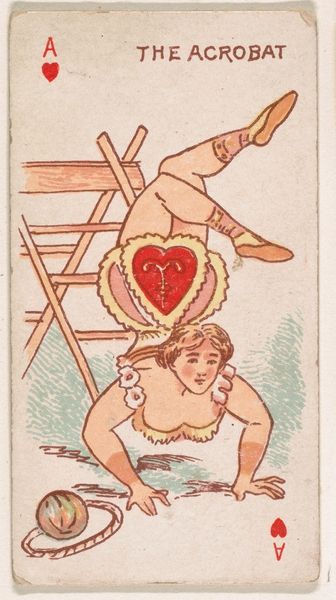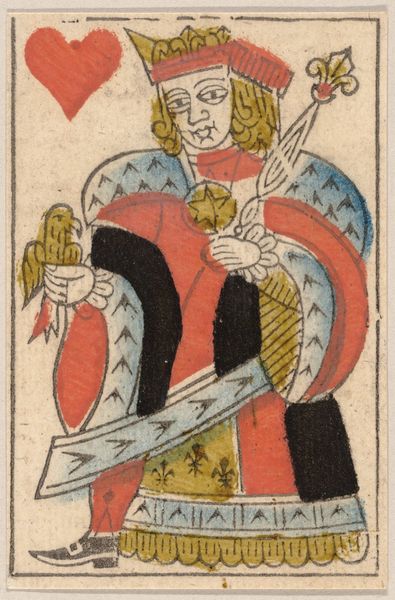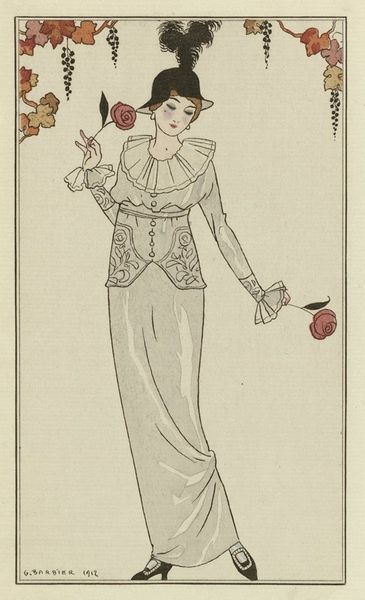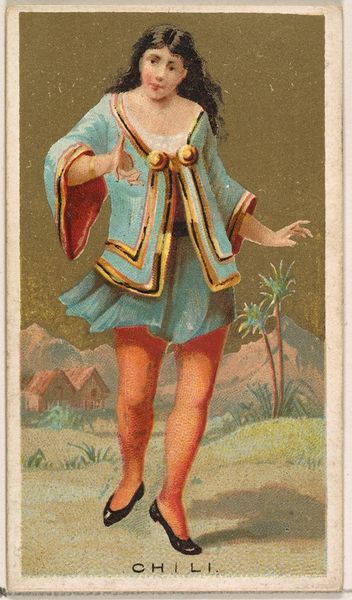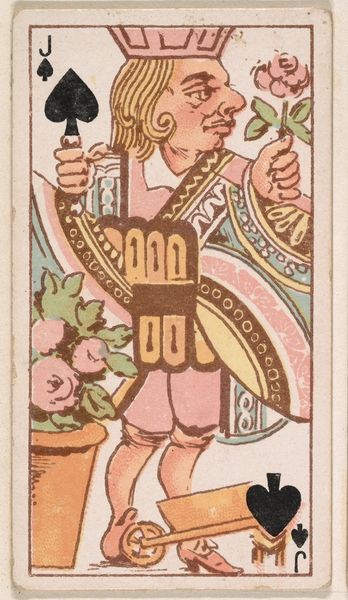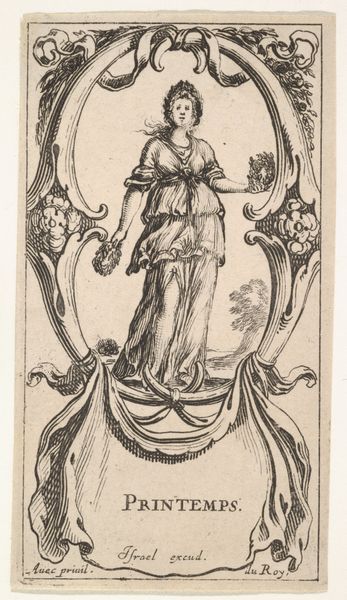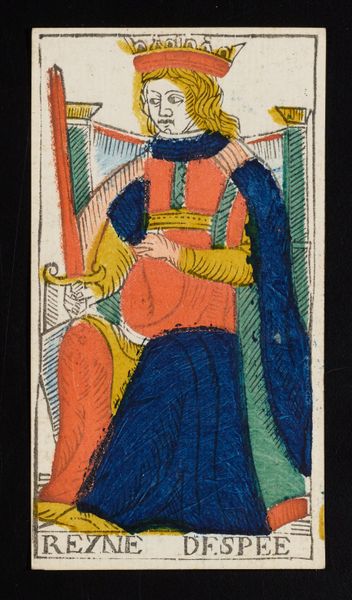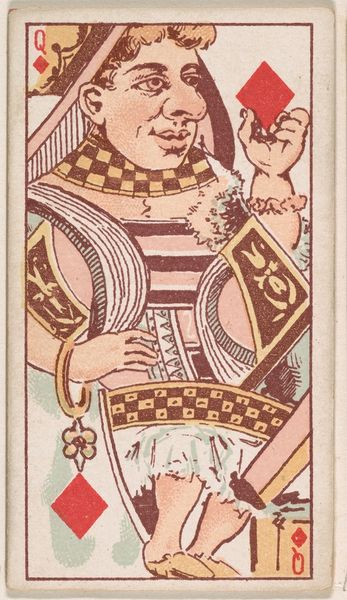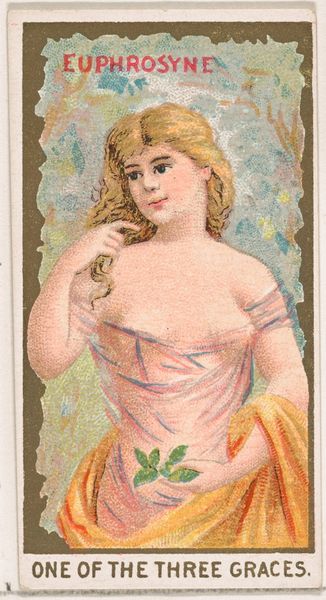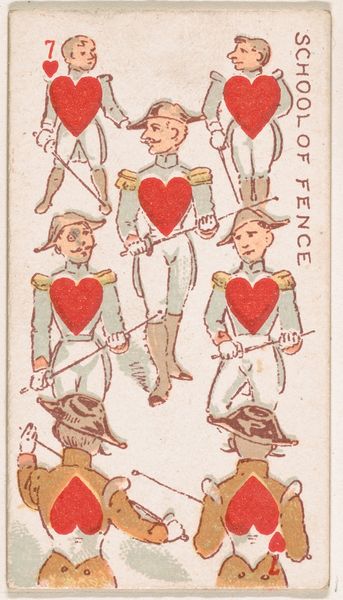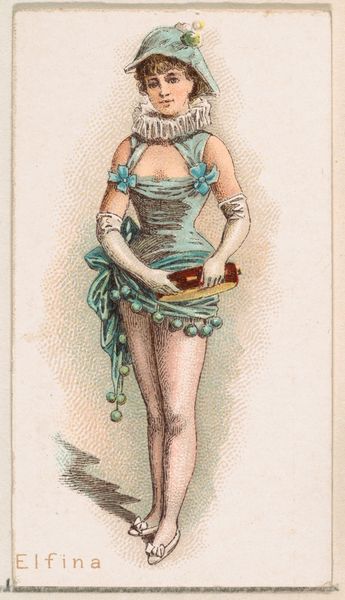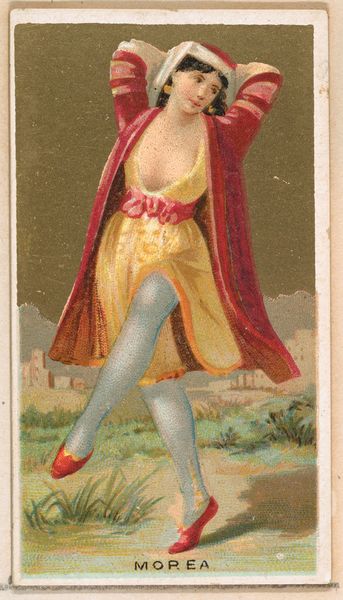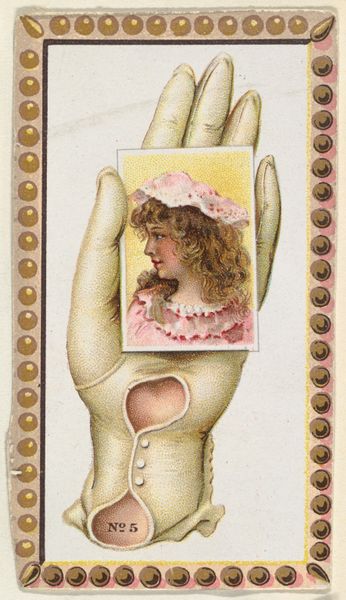
Three of Hearts, Pet of the Ballet, from Harlequin Cards, 2nd Series (N220) issued by Kinney Bros. 1889
0:00
0:00
drawing, print
#
portrait
#
drawing
# print
#
figuration
#
cartoon style
Dimensions: Sheet: 2 3/4 × 1 1/2 in. (7 × 3.8 cm)
Copyright: Public Domain
Curator: Oh, this is fascinating. What strikes you first about this piece? Editor: The whimsical design grabs me—a figure so blatantly symbolic, almost cartoonish. Is that really the historical context? Curator: Yes, in a way. We are looking at “Three of Hearts, Pet of the Ballet," one of the Harlequin Cards from the second series by Kinney Bros., dating back to 1889. These were distributed with tobacco products. What do you see here in terms of recognizable symbols? Editor: Well, the hearts are obvious, and their placement is quite loaded. She’s quite literally wearing her heart on her sleeve...or everywhere, actually. There's an intentional vulnerability here, wouldn't you say? But also, being associated with tobacco normalizes pleasure as central. Curator: Indeed. The heart is universally associated with love and emotion, and notice its positioning on her forehead, her chest, even as part of the tutu's design. In that era, ballet was gaining popularity and performers became cultural icons—objects of both admiration and desire. And of course a visual icon of privilege and aspiration. Editor: Absolutely. The ballet, historically exclusive, also reveals hierarchies of power—who gets to perform, who gets to watch. In a society grappling with massive social shifts, a card like this does more than just depict, it actively reinforces certain social arrangements. The idea of ballet "pets," the suggestion of favor and possession, reads disturbingly. Curator: I see your point. One might even argue it hints at exploitation beneath the glossy surface of performance. Considering that the Kinney Bros. produced it for commercial ends, how can we decode their specific use of it? Editor: The integration of playing card iconography suggests an element of chance and risk. You purchase your tobacco, and potentially receive this "Pet of the Ballet". It feels deeply entrenched in a commodified version of entertainment and feminine display. It subtly reinforces expectations for women within that confined space. Curator: So while seemingly light-hearted, it encapsulates the intertwined nature of commerce, desire, and societal norms during the late 19th century? Fascinating. I will definitely revisit it to think further about how symbols are being negotiated and co-opted in the broader culture. Editor: Exactly. This deceptively simple image packs a punch when you unpack its social baggage. It's more than just a card; it's a time capsule of anxieties and aspirations, framed through a patriarchal lens.
Comments
No comments
Be the first to comment and join the conversation on the ultimate creative platform.
